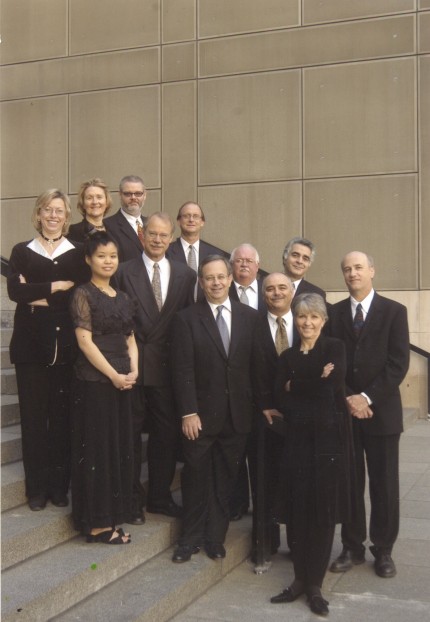CCM closes season with seasonal work for brass quintet

The Chicago Chamber Musicians closed their season with two large-scale works that brought together nearly the full complement of members Monday night at the Harris Theater. Yet it was the smaller-scale centerpiece that provided the most interest, John Stevens’ Seasons, subtitled “A Symphony for Brass Quintet.”
The Vivaldian work opens with Spring, depicted with low repeated tuba notes as the other players enter one by one. After a wistful theme for muted trumpet, the tempo accelerates with a syncopated motif, and though the music is spirited, there are more serious and introspective moments in Stevens’ Spring than one might expect.
Summer leads off with a driving trombone riff, setting the pace for this fast, jazz-inflected music, the momentum halted briefly by a galumphing tuba solo and lyrical passage for trombone.
Autumn presents reflective and inward-looking music. The Winter finale is unsettled with jagged solos against the trumpets’ insistent pulsing counterpoint. The tuba treads malevolently and eventually the restless, agitated music slows down and, as all five musicians play with mutes, the nostalgic trumpet solo of Spring returns, bringing us full circle to another seasonal cycle.
Stevens’ 1984 quintet is crafted with real skill, varied in its material and offers showy opportunities for all five players. Some fleeting lapses in Autumn apart, trumpeters Barbara Butler and Charles Geyer, hornist Gail Williams, trombonist Michael Mulcahy and tubist Michael Gaunt provided sterling advocacy.
The evening led off with Wagner’s Siegfried Idyll. Quite possibly the greatest musical birthday gift of all time, Wagner wrote it for his wife Cosima after the birth of their son Siegfried, the premiere taking place at their Switzerland home, with the 13 musicians arrayed on the stairs. Drawing on musical themes of personal significance, some of which would later find their way into the opera Siegfried, the Idyll’s gentle lyricism and contentment virtually personify domestic bliss.
The 13 CCM players offered an admirable performance and retained impressive concentration when a clueless woman exited a few minutes in, noisily clacking her heels on the cement steps. If the performance didn’t quite capture the Idyll’s relaxed intimacy, there were ample worthy moments, particularly Gail Williams’ horn playing, and the conversational passage between violinist Joseph Genualdi and cellist Clancy Newman at the coda had the requisite peaceful glow.
Brahms was so intimidated by the looming shadow of Beethoven that he didn’t complete his First Symphony until age 43. Brahms’ Serenade No. 1, written at age 20, was a kind of cautious toe-dipping in the symphonic waters, a way to test-drive writing a multi-movement work for orchestra without the pressure of creating a symphony. And while the Serenade No. 1 doesn’t have the weight, depth or cohesion of Brahms’ symphonies to come, there’s a freshness, outdoor-air lyricism and engaging quality about the music that’s not always evident in Brahms’ later, greater works.
Brahms originally wrote the Serenade for nine players but then almost immediately recast it in the familiar orchestral version in which it is known. Monday night’s CCM performance gave us a reconstruction by Alan Boustead of the lost nonet version. Little of the music goes missing and at times the re-reduction has a rustic village band quality suited to the al fresco style.
But ultimately this is music that cries out for a larger canvas. Boustead’s arrangement is rendered with great skill but the textures often feel scrawny, particularly having just three string players and bass (unaided Monday night by some wayward string intonation). There was much fine playing by the CCM forces, especially Williams’ horn solos, and the personality-plus clarinet work of Larry Combs. Yet without the greater coloristic opportunities of the full orchestra, the six movements tend to drag, and, while interesting to hear, one can’t see this version entering the regular chamber repertoire.
Posted in Performances



Posted Jun 06, 2012 at 3:43 pm by Joyce Hollinger
My sister and I had the privilege of attending Monday, June 4 CCM performance.
It was a beautiful experience and yes the Boustead arrangement was a little long, but beautifully done by the group.
Continued good luck to the Chamber group.
Sincerely,
Joyce Hollinger